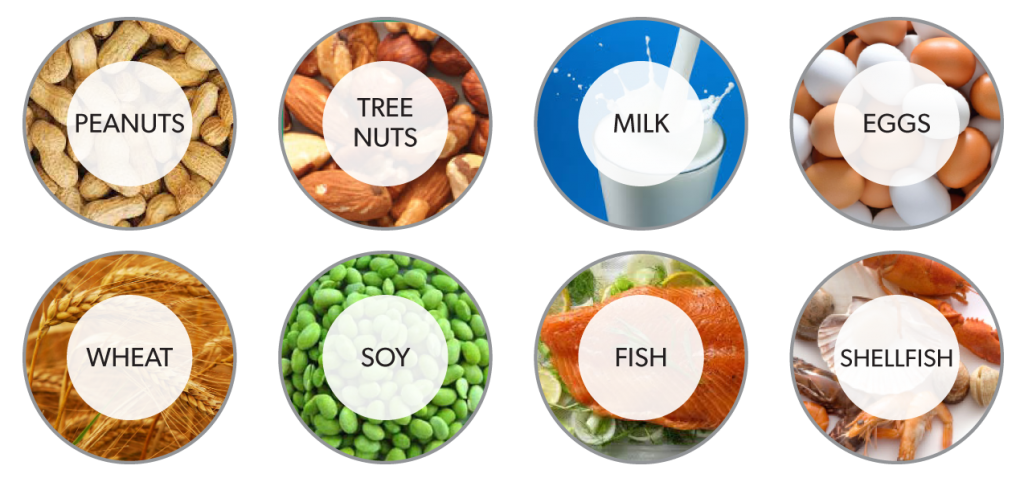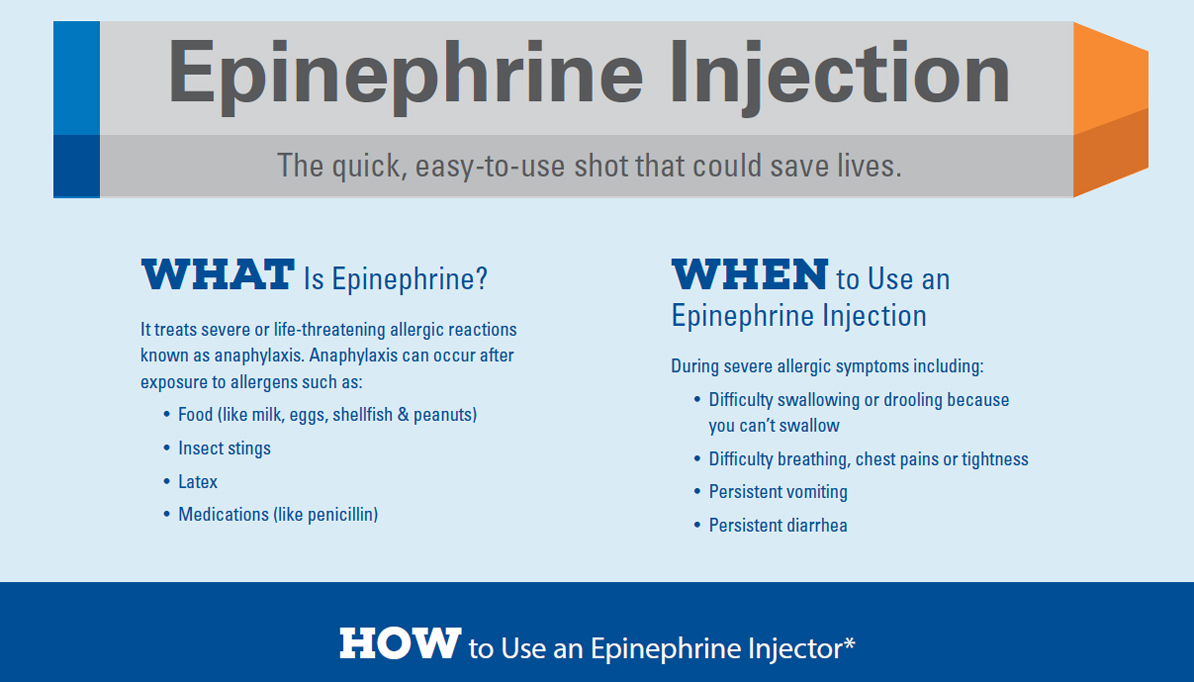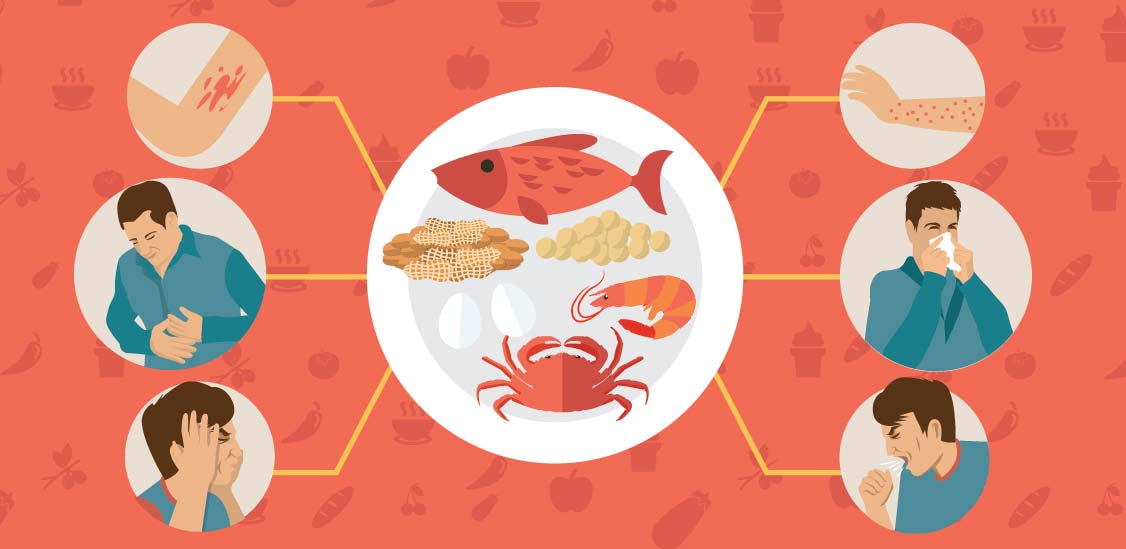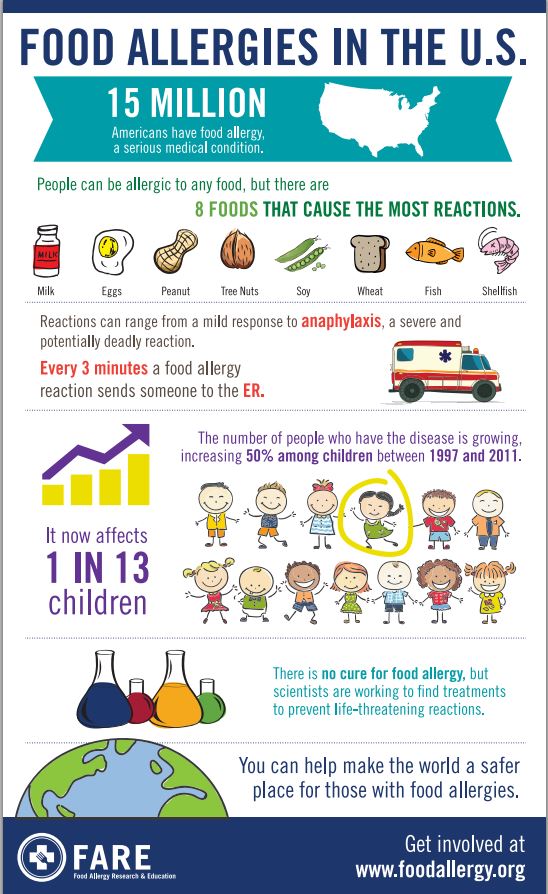While much has been done to educate food handlers on safe food-handling practices, continued training in food allergies is needed by workers to recognize the initial signs of allergic reactions – and the best practices for safely preparing food for and serving food allergic guests.

What Are Major Food Allergens?
Although most food allergies cause relatively mild and minor symptoms, some food allergies can cause severe reactions, and may even be life-threatening.
There is no cure for food allergies. Strict avoidance of food allergens — and early recognition and management of allergic reactions to food — are important measures to prevent serious health consequence.

While more than 160 foods can cause allergic reactions in people with food allergies, the law identifies the eight most common allergenic foods. These foods account for 90 percent of food allergic reactions, and are the food sources from which many other ingredients are derived.The eight foods identified by the law are:
- Milk
- Eggs
- Fish (e.g., bass, flounder, cod)
- Crustacean shellfish (e.g., crab, lobster, shrimp)
- Tree nuts (e.g., almonds, walnuts, pecans)
- Peanuts
- Wheat
- Soybeans
These eight foods, and any ingredient that contains protein derived from one or more of them, are designated as “major food allergens” by FALCPA.
FDA’s Role: Labeling
To help Americans avoid the health risks posed by food allergens, FDA enforces the Food Allergen Labeling and Consumer Protection Act of 2004 (the Act). The Act applies to the labeling of foods regulated by FDA which includes all foods except poultry, most meats, certain egg products, and most alcoholic beverages which are regulated by other Federal agencies. The Act requires that food labels must clearly identify the food source names of any ingredients that are one of the major food allergens or contain any protein derived from a major food allergen.As a result, food labels help allergic consumers identify offending foods or ingredients so they can more easily avoid them.
Video: Food Allergies – Reducing the Risks
Severe Food Allergies Can Be Life-Threatening
Following ingestion of a food allergen(s), a person with food allergies can experience a severe, life-threatening allergic reaction called anaphylaxis.
This can lead to:
- constricted airways in the lungs
- severe lowering of blood pressure and shock (“anaphylactic shock”)
- suffocation by swelling of the throat
Each year in the U.S., it is estimated that anaphylaxis to food results in:
- 30,000 emergency room visits
- 2,000 hospitalizations
- 150 deaths
Prompt administration of epinephrine by autoinjector (e.g., Epi-pen) during early symptoms of anaphylaxis may help prevent these serious consequences.

Know the Symptoms
Symptoms of food allergies typically appear from within a few minutes to 2 hours after a person has eaten the food to which he or she is allergic. Allergic reactions can include:
- Hives
- Flushed skin or rash
- Tingling or itchy sensation in the mouth
- Face, tongue, or lip swelling
- Vomiting and/or diarrhea
- Abdominal cramps
- Coughing or wheezing
- Dizziness and/or lightheadedness
- Swelling of the throat and vocal cords
- Difficulty breathing
- Loss of consciousness

Mild Symptoms Can Become More Severe
Initially mild symptoms that occur after ingesting a food allergen are not always a measure of mild severity. In fact, if not treated promptly, these symptoms can become more serious in a very short amount of time, and could lead to anaphylaxis.

Food Allergy Training – Federal & General Resources
- AAAAI/ACAAI Practice Parameters
- Centers for Disease Control and Prevention
- Department of Agriculture
- Food Allergy Educational Materials – WIC Works Resource System
- Food Allergies and Intolerances – Nutrition.gov
- Department of Health and Human Services
- Food Allergies – Healthfinder
- European Academy of Allergy and Clinical Immunology: International Consensus (ICON) Papers
- FDA – Food Allergens
- FDA – Food Allergen Labeling & Consumer Protection Act – FAQs
- National Institutes of Health (NIH)
- Food Allergy – National Institute of Allergy and Infectious Diseases (NIAID)
- Addendum Guidelines for the Prevention of Peanut Allergy (2017)
- National Institute for Allergy & Infectious Diseases: Guidelines for the Diagnosis and Management of Food Allergy in the United States: Summary for Patients, Families and Caregivers (May 2011)
- National Institute of Allergy and Infectious Diseases, National Institutes of Health: Food Allergy
- National Library of Medicine
- Food Allergy – Medical Encyclopedia
- Food Allergy – MEDLINEplus
